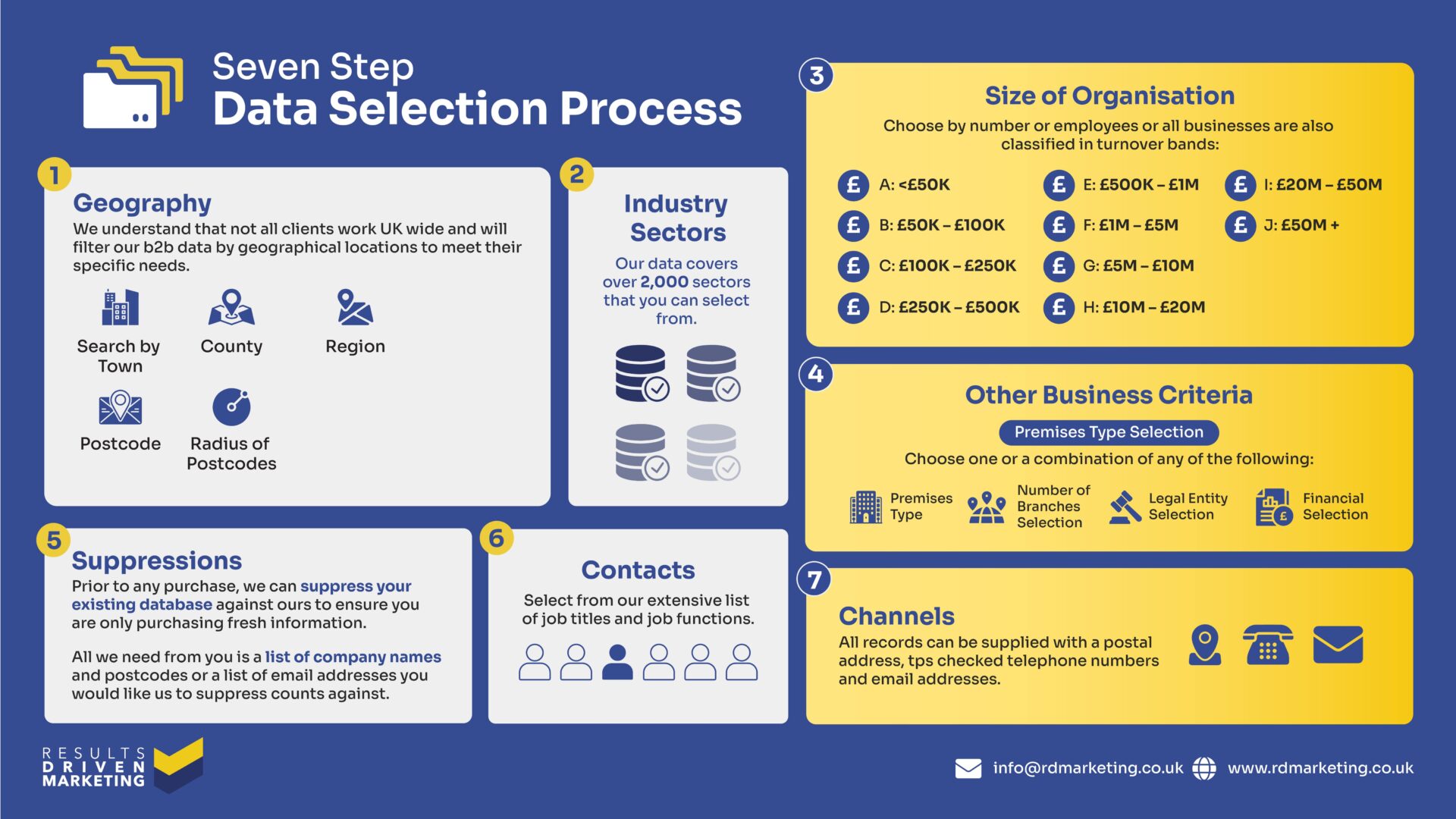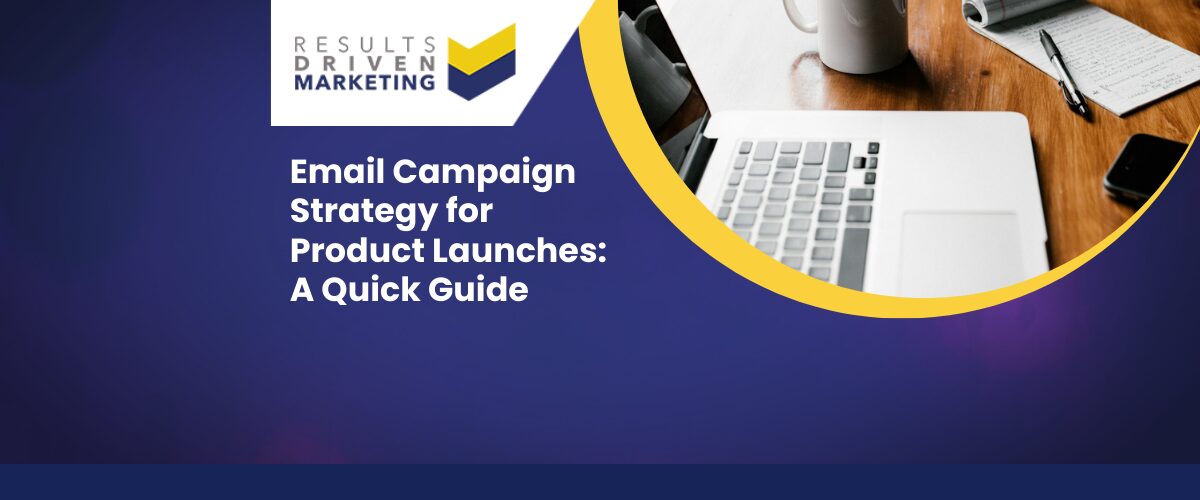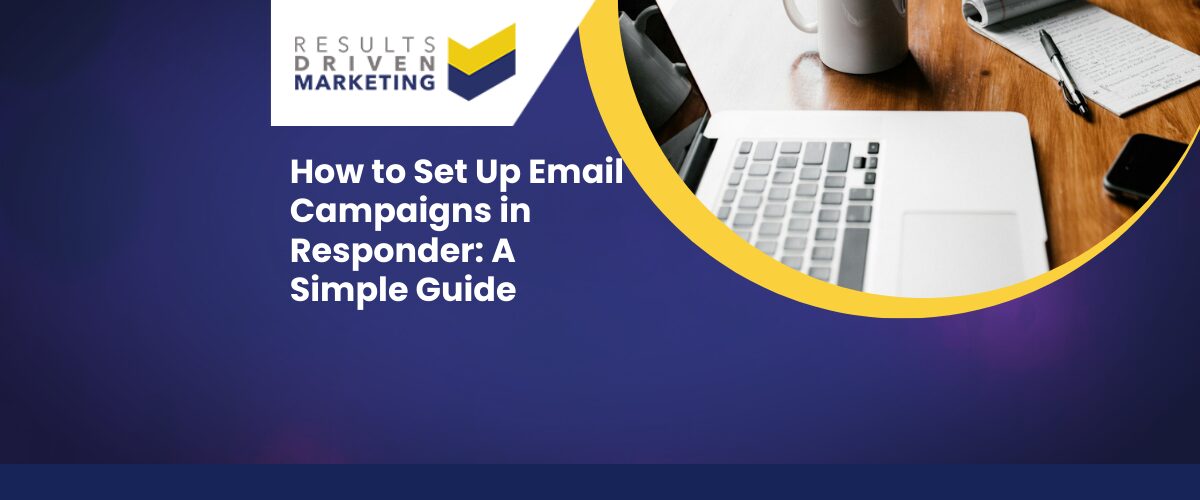
Email Marketing for Beginners: Best Practices for Higher Engagement
Getting started with email marketing for beginners might feel a bit overwhelming, especially if you’re new to digital marketing. But don’t worry—it’s actually one of the most powerful tools you can use to reach customers, build lasting relationships, and drive sales, all without a hefty price tag.
Think of this article as your hands-on guide to mastering email marketing from scratch. We’ll cover everything you need, from the basics of setting up campaigns to smart strategies for keeping subscribers engaged in ways that make a real impact.
So, why should beginners focus on email marketing? Let’s break it down:
- High ROI Potential: Email marketing consistently ranks as one of the most cost-effective strategies for businesses. According to industry reports, every dollar spent on email marketing can generate an average return of $42, making it an ideal choice for beginners looking for results without significant costs.
- Direct, Personal Communication: Unlike social media, where algorithms dictate who sees your content, email marketing allows you to communicate directly with your audience. Every email lands right in the subscriber’s inbox, which means a more personal, focused way to connect with your audience.
- Versatility and Scalability: Whether you’re a small business or an expanding startup, email marketing grows with you. Starting with simple campaigns and progressing to advanced automated sequences is entirely manageable, which makes email marketing one of the most scalable options for any business size.
For those getting started with email marketing, there are some foundational best practices that will help improve engagement with your audience.
This article will guide you step-by-step through these essentials, covering everything you need to know to maximise open rates, clicks, and ultimately conversions from your email marketing campaigns.
Table of contents:
Understanding the Basics
What is Email Marketing?
So, let’s start with the basics—what exactly is email marketing? At its core, email marketing is a method of directly reaching out to an email list of people via email to communicate, share updates, or promote products and services.
For beginners, it’s an efficient way to nurture leads, build relationships, and drive conversions without relying on external platforms or social media algorithms.
There are three main types of emails commonly used in email marketing:
Promotional Emails: These are the emails most people think of when they hear “email marketing.” Promotional emails are designed to showcase products, offer discounts, or inform subscribers about upcoming events and sales. They are particularly effective for driving direct responses, like sales or sign-ups.
Transactional Emails: Often automated, transactional emails are sent after specific actions, like a purchase or registration. These emails confirm an order, provide shipping details, or welcome a new subscriber. They’re more service-oriented, but they can still be branded and designed to leave a positive impression.
Informational Emails: These include newsletters, updates, and other content that delivers value without asking for anything in return. Informational emails are perfect for keeping your audience engaged and informed, helping to build trust and credibility.
Each type of email serves a different purpose, and having a good mix of them can help keep your audience engaged while achieving various goals.
For instance, a consistent schedule of promotional and informational emails can build anticipation and nurture leads, while transactional emails enhance the customer experience.
Whether you’re using email marketing to promote your latest product or simply sharing industry insights with a subscriber list, RD Marketing’s Email Marketing Management Services can support you in creating campaigns that flow smoothly from one type of email to the next.
Why Use Email Marketing?
Now that we know what email marketing entails, the next big question is: why should beginners focus on email marketing over other channels? Let’s dive into the key benefits that make email marketing such a valuable asset.
- Cost-Effectiveness: One of the biggest draws of email marketing is that it offers a high return on investment (ROI) at a relatively low cost. You can reach a large audience without breaking the bank, making it ideal for beginners and small businesses. And with options like RD Marketing’s Direct Mail Data, you can ensure your messages reach the right inboxes.
- Direct Engagement: Unlike social media, where posts are often at the mercy of algorithms, emails land directly in a subscriber’s inbox, offering a more personal way to communicate. This direct access can lead to higher engagement rates because subscribers are more likely to see your messages.
As well as….
- Customer Retention: Email marketing is a powerful tool for keeping your existing customers engaged and informed. By consistently delivering value, whether through informative newsletters or special offers, you can increase customer loyalty. A simple welcome series for new subscribers or a regular newsletter helps keep your brand top of mind.
- Data-Driven Insights: With email marketing, you can track specific metrics—like open rates, click-through rates, and conversions—that give you a clear picture of what works and what doesn’t. For example, using Data Enrichment Services can help you add more meaningful details to your contacts, allowing for greater personalisation and segmentation.
Email marketing for beginners might seem complex, but with the right guidance and resources, anyone can start leveraging these benefits to grow their business.
If you’re looking to optimise your approach, RD Marketing’s Consumer Data and B2B Data services make it easy to build targeted lists and connect with the people who matter most to your brand.
Setting Up Your First Campaign
Creating your very first email marketing campaign can be an exciting yet slightly daunting task. But don’t worry—when you break it down, setting up a campaign is simply a series of manageable steps that, when done right, lead to impactful results.
In this section, we’ll look at choosing the right platform, building and segmenting your email list, and how each step helps you reach your audience more effectively.
Choosing an Email Marketing Platform
The first step in your email marketing journey is selecting the platform that fits your needs. There are plenty of options out there, each with unique features that can support email marketing for beginners as they grow and scale their campaigns.
Here are a few popular platforms to consider:
- Mailchimp: Known for its user-friendly design and free tier, Mailchimp is often a top pick for beginners. It offers intuitive drag-and-drop tools, easy automation, and basic analytics, making it an excellent choice if you’re just starting out.
- Constant Contact: With a focus on simplicity, Constant Contact is a good choice for those new to email marketing. It has powerful automation features, including list segmentation and scheduling, as well as built-in tools for social media ads.
- SendinBlue: SendinBlue is affordable and versatile, with built-in tools for email, SMS, and landing page creation. Beginners appreciate its flexibility and simple user interface, and it also offers more advanced features as you grow.
As a beginner, look for an email marketing platform that offers:
- Ease of Use: Ensure the platform’s interface is intuitive so that you can quickly build and edit emails.
- Automation Capabilities: Automation is a time-saver, helping you set up welcome emails, product recommendations, and follow-ups without manual intervention.
- Analytics and Reporting: Data-driven insights are essential to understand what’s working and what isn’t. Choose a platform with built-in analytics that can track open rates, click-throughs, and conversions.
At RD Marketing, our Email Marketing Management Services support you with tools to get started, no matter which platform you choose.
Building and Segmenting Your Email List
Once you have your platform, the next step is building your email list. A strong list is essential for successful email marketing because it ensures that your emails reach people who are genuinely interested in your brand. Here’s how to get started:
Create Opt-In Forms: Encourage visitors to join your list by adding sign-up forms to your website, blog, and social media. Offering a small incentive—such as a discount or free downloadable guide—can make opting in more enticing.
Use Clear CTAs (Calls to Action): Every opt-in form should include a simple, compelling CTA that makes it easy for visitors to understand the benefits of joining your list.
Leverage Lead Magnets: Offering valuable content like eBooks, checklists, or exclusive guides in exchange for an email address is a great way to build a quality list. People are more likely to share their contact info if they know they’ll get something useful in return.
If you’re targeting specific audiences, such as businesses or niche consumer groups, consider RD Marketing’s B2B Data or Consumer Data services to build your initial list faster and more effectively.
Once your list begins to grow, the next step is segmentation. Segmentation is the process of dividing your email list into smaller groups based on shared characteristics, like location, past purchases, or specific interests. Here’s how to get started with segmentation:
- Identify Key Segments: Think about the categories that make the most sense for your business. For example, you might have segments based on geographic region or customer behavior.
As well as….
- Tailor Content to Each Segment: Sending relevant content to each segment keeps subscribers engaged. For example, a special offer for loyal customers might be appreciated, while new subscribers may benefit from an introductory series explaining your brand.
- Use Data to Refine Segments: The more you know about your audience, the better you can tailor your content. Tools like RD Marketing’s Data Enrichment Services can add valuable information to your contact records, making it easier to personalise and segment effectively.
A well-segmented list doesn’t just improve engagement—it also enhances deliverability, helping your emails avoid spam folders and reach the intended inboxes. For those concerned about list accuracy, RD Marketing’s Data Cleansing Services help keep your list up-to-date by removing inactive or duplicate contacts.
Crafting Engaging Content
Creating engaging content is where your email marketing truly comes to life. After all, it’s not just about showing up in someone’s inbox—it’s about standing out once you’re there.
Whether it’s a catchy subject line, an intriguing body, or a well-placed call-to-action (CTA), each piece of your email needs to work together to capture attention and drive action. Let’s dive into some best practices for email marketing for beginners.
Best Practices for Subject Lines
The subject line is the first thing your subscribers see, so it needs to be on point. A well-crafted subject line can make all the difference between an email that’s eagerly opened and one that’s ignored or deleted. Here are some tips for crafting subject lines that catch the eye:
- Keep it Short and Clear: Aim for 6–10 words that are direct and to the point. Many people read emails on mobile devices, where longer subject lines can get cut off. A clear, concise subject line is more likely to catch attention.
- Use Actionable Language: Try phrases like “Discover,” “Get ready,” or “Don’t miss out.” Action-oriented words create a sense of urgency, making readers more likely to open your email.
- Avoid Spam Trigger Words: Words like “Free,” “Earn Money,” or “Act Now” can trigger spam filters and hurt deliverability. Instead, be creative with your wording to avoid landing in the spam folder.
Crafting subject lines with personalisation can also boost open rates. Using tools like Data Enrichment Services from RD Marketing allows you to add extra information to each contact, making it easier to tailor your subject lines to specific segments.
Email Body and Content Formatting
Once you’ve convinced your audience to open your email, the content needs to keep them engaged. For beginners, here are the core elements to focus on:
Start with Value: Jump right into what’s beneficial for your reader. Avoid lengthy intros and get to the heart of your message. What’s in it for them? Answer that question early on to keep them reading.
Keep it Concise and Scannable: Most people won’t read every word, so structure your content for easy scanning. Use bullet points, short paragraphs, and subheadings. This allows readers to quickly find key information without feeling overwhelmed.
Include a Clear CTA: Every email should have a purpose, whether it’s driving sales, promoting a new product, or encouraging readers to visit your website. Place your CTA prominently and make it clear. Whether it’s a “Learn More” button or “Shop Now” link, make sure it’s easy for readers to find and click.
Personalise Where Possible: Adding a personal touch, like using the reader’s first name or mentioning their interests, makes the content feel tailored to them. If you’re working with different audience segments, RD Marketing’s Email Address List Data can help you deliver content that’s relevant to each segment.
Optimise for Mobile: More than half of all emails are opened on mobile devices, so make sure your email looks great on all screen sizes. Test it on mobile to confirm that images, text, and CTAs display properly.
Design Tips
Good design is just as important as good content. You don’t need to be a designer to create visually appealing emails—keeping things simple and clean is often the best approach for beginners.
- Stick to Your Brand’s Look and Feel: Use colors, fonts, and styles that reflect your brand. Consistent branding helps build trust with your audience over time.
- Use Images Sparingly: While images can add appeal, too many can slow down load times and may not display correctly on all devices. A few strategically placed images are often more effective than a fully image-based email.
- Whitespace is Your Friend: Give your content room to breathe by adding enough space between sections. This makes your email easier to read and navigate, creating a better user experience.
Personalisation and Automation
To really see the power of email marketing for beginners, personalisation and automation are essential tools.
They allow you to connect with your audience in a way that feels relevant, timely, and engaging. Both of these tactics can significantly boost your engagement rates, helping you create a more personal experience for each subscriber without a ton of extra work.
Basics of Email Personalisation
Personalisation is all about making each email feel as though it’s crafted specifically for the individual receiving it. When subscribers feel like a brand truly understands them, they’re more likely to open, click, and engage with emails. Here’s how to approach personalisation as a beginner:
Start with Names: Addressing subscribers by their first name in the subject line or greeting is a small touch that can make a big impact. It’s simple yet effective and shows a level of thoughtfulness that makes readers feel valued.
Segment Your Audience by Interests or Behavior: A one-size-fits-all approach rarely works in email marketing. By segmenting your list based on customer interests, purchase behavior, or demographics, you can tailor content that resonates with each group.
RD Marketing’s Data Enrichment Services can help you gather additional details about your subscribers, giving you more data to use in your personalisation strategy.
Offer Relevant Recommendations: Think about sending product suggestions based on previous purchases or browsing behavior. Personalised recommendations are a great way to show your audience that you understand their preferences.
Location-Based Personalisation: If your business operates internationally, segmenting by location allows you to tailor content to regional interests, seasons, or even time zones. For businesses targeting multiple countries, RD Marketing’s International Email List can help you reach audiences in specific regions more effectively.
Ultimately, personalised emails improve engagement by making readers feel understood and valued. And with tools and services from RD Marketing, you can enhance your personalisation strategy with accurate and enriched data.
Automation for Beginners
Automation might sound technical, but for beginners, it’s a straightforward way to streamline your email marketing without needing to manually manage every step.
Automated email campaigns help you reach the right people at the right time, with content that feels timely and relevant. Here’s a look at some essential automated campaigns to consider:
- Welcome Series: When someone new joins your list, a welcome series is a great way to introduce your brand, highlight key offerings, and set expectations. This series typically includes a few emails spaced out over a week or two, helping subscribers get familiar with what you offer.
- Abandoned Cart Emails: If you’re in e-commerce, abandoned cart emails can help bring customers back to complete their purchase. These are automatically triggered when someone leaves items in their shopping cart, offering a gentle nudge that can increase conversion rates.
- Re-Engagement Campaigns: Subscribers who haven’t interacted with your emails in a while can be brought back with a re-engagement campaign. Offer a special discount, highlight new products, or ask for feedback to remind them of what makes your brand valuable.
For beginners, automation can save time and ensure that your subscribers receive relevant content without constant manual input. If you’re new to automation, RD Marketing’s Email Marketing Management Services provide the tools you need to set up these kinds of campaigns with ease.
Bringing It All Together with Data Management
Effective personalisation and automation both rely on good data. Clean, accurate, and up-to-date data is the backbone of any successful email marketing strategy. By regularly using Data Cleansing Services, you can keep your email list in top shape, avoiding problems like duplicate contacts or outdated information that can harm engagement.
Analysing and Optimising for Engagement
Once you’ve sent out a few campaigns, it’s time to take a step back and analyse how they’re performing. For beginners in email marketing, understanding your email metrics and using that data to make improvements is key to growing your engagement and reaching your goals.
Tracking the right metrics will tell you what resonates with your audience and where there’s room for improvement. Let’s look at the main metrics to monitor and how beginners can start testing and optimising their campaigns.
Key Metrics to Track
Here are the essential metrics for analysing your email campaigns:
Open Rate: This is the percentage of subscribers who open your email. A high open rate generally indicates that your subject lines and sender name are compelling enough to capture attention. Low open rates could suggest it’s time to refine those subject lines.
Click-Through Rate (CTR): This is the percentage of people who click on a link within your email. CTR shows how engaging and relevant your content is. If people aren’t clicking, it may be worth revisiting your call-to-action (CTA) or ensuring your content matches your audience’s interests.
Bounce Rate: Bounce rate measures the percentage of emails that didn’t make it to recipients’ inboxes. A high bounce rate could mean that your list includes outdated or invalid email addresses. Regularly updating your list with Data Cleansing Services can help maintain list quality and reduce bounces.
Conversion Rate: This is the percentage of subscribers who take a desired action, such as making a purchase or signing up for an event. Conversion rate is arguably the most important metric, as it indicates whether your emails are effectively driving results.
Each of these metrics offers unique insights into how well your emails resonate with your audience. If you’re new to tracking metrics, start simple: monitor open rates to gauge interest, and then move on to CTR and conversion rates as you get more comfortable.
A/B Testing for Beginners
A/B testing, or split testing, is a fantastic way to optimise your email campaigns. With A/B testing, you can compare two versions of an email to see which performs better. This can be particularly helpful in email marketing for beginners, allowing you to test different elements and make data-driven decisions without guesswork.
Here’s how to start with A/B testing:
Choose One Variable at a Time: Begin by selecting a single element to test, such as the subject line, CTA, or email design. For example, you might test a short, direct subject line against one that’s longer and more descriptive.
Send to a Small Segment: Send version A to half of your audience and version B to the other half. Monitor the results and see which one performs better.
Evaluate the Results: After the test runs, check which version yielded a higher open rate, CTR, or conversion rate, depending on what you were testing. Use this information to inform your next campaign.
Iterate: A/B testing isn’t a one-time task. Testing regularly can provide ongoing insights and help you fine-tune your strategy. For example, if testing shows that subscribers respond well to certain CTAs, you can incorporate that style in future emails.
Using Email Marketing Management Services can simplify A/B testing by offering built-in tools to track and analyse results, even for beginners.
Tips for Interpreting Data and Iterating on Future Campaigns
As you collect data, you’ll start noticing patterns that can guide your email marketing strategy. Here are some tips for using your metrics to optimise future campaigns:
- Identify Trends: Look for patterns over time. For instance, if open rates consistently improve with personalised subject lines, make personalisation a regular part of your strategy. RD Marketing’s Data Enrichment Services can provide more data points for personalisation, helping you reach each segment of your audience more effectively.
- Set Benchmarks and Goals: Establishing benchmarks for each metric helps you measure your success. Start with realistic goals based on industry averages and adjust as you learn what works best for your audience.
- Refine Your Segmentation: If certain segments consistently show higher engagement, focus on refining your content for them. Using B2B Data from RD Marketing can help you target specific segments more accurately.








